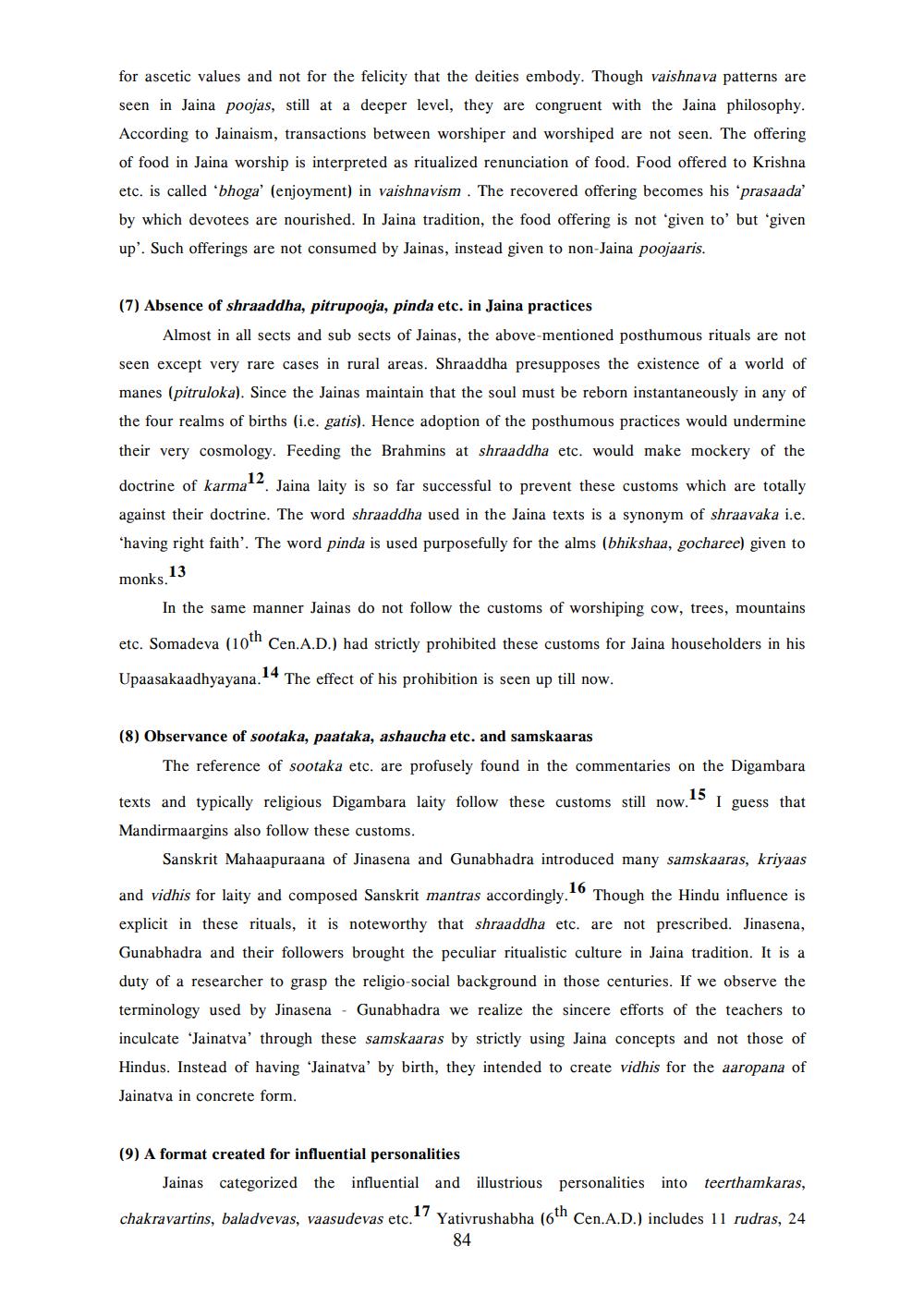________________
for ascetic values and not for the felicity that the deities embody. Though vaishnava patterns are seen in Jaina poojas, still at a deeper level, they are congruent with the Jaina philosophy. According to Jainaism, transactions between worshiper and worshiped are not seen. The offering of food in Jaina worship is interpreted as ritualized renunciation of food. Food offered to Krishna etc. is called 'bhoga' (enjoyment) in vaishnavism. The recovered offering becomes his 'prasaada by which devotees are nourished. In Jaina tradition, the food offering is not given to' but given up'. Such offerings are not consumed by Jainas, instead given to non-Jaina poojaaris.
(7) Absence of shraaddha, pitrupooja, pinda etc. in Jaina practices
Almost in all sects and sub sects of Jainas, the above-mentioned posthumous rituals are not seen except very rare cases in rural areas. Shraaddha presupposes the existence of a world of manes (pitruloka). Since the Jainas maintain that the soul must be reborn instantaneously in any of the four realms of births (i.e. gatis). Hence adoption of the posthumous practices would undermine their very cosmology. Feeding the Brahmins at shraaddha etc. would make mockery of the
doctrine of karma. Jaina laity is so far successful to prevent these customs which are totally against their doctrine. The word shraaddha used in the Jaina texts is a synonym of shraavaka i.e. “having right faith'. The word pinda is used purposefully for the alms (bhikshaa, gocharee) given to
monks 13
In the same manner Jainas do not follow the customs of worshiping cow, trees, mountains
etc. Somadeva (10th Cen.A.D.) had strictly prohibited these customs for Jaina householders in his
Upaasakaadhyayana.'4 The effect of his prohibition is seen up till now.
(8) Observance of sootaka, paataka, ashaucha etc. and samskaaras
The reference of sootaka etc. are profusely found in the commentaries on the Digambara
texts and typically religious Digambara laity follow these customs still now. I guess that Mandirmaargins also follow these customs.
Sanskrit Mahaapuraana of Jinasena and Gunabhadra introduced many samskaaras, kriyaas
and vidhis for laity and composed Sanskrit mantras accordingly. 16 Though the Hindu influence is explicit in these rituals, it is noteworthy that shraaddha etc. are not prescribed. Jinasena, Gunabhadra and their followers brought the peculiar ritualistic culture in Jaina tradition. It is a duty of a researcher to grasp the religio-social background in those centuries. If we observe the terminology used by Jinasena - Gunabhadra we realize the sincere efforts of the teachers to inculcate 'Jainatva' through these samskaaras by strictly using Jaina concepts and not those of Hindus. Instead of having 'Jainatva' by birth, they intended to create vidhis for the aaropana of Jainatva in concrete form.
(9) A format created for influential personalities
Jainas categorized the influential and
illustrious personalities
into
teerthamkaras,
chakravartins, baladvevas, vaasudevas etc.
Yativrushabha (6th Cen.A.D.) includes 11 rudras, 24
84




